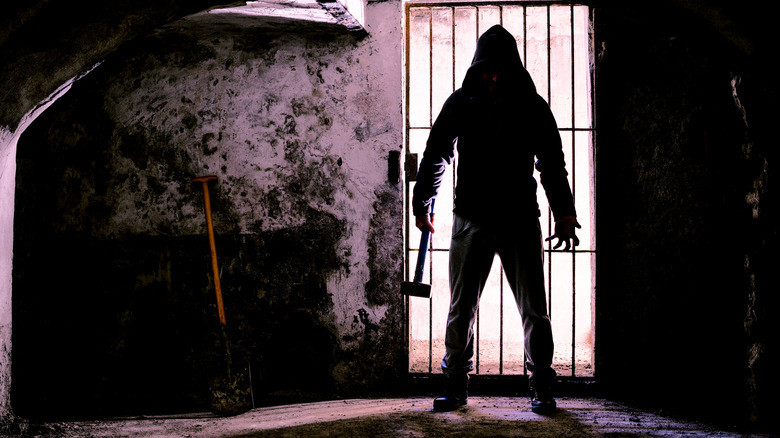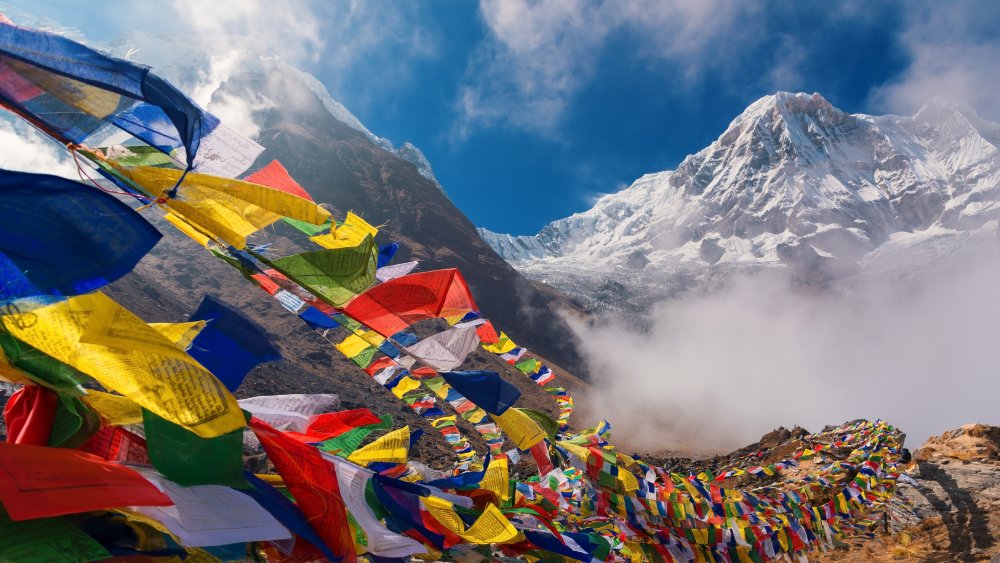
The Truth Of Annapurna, The World’s Deadliest Mountain
When you think of the deadliest mountain in the world, your brain probably goes straight to Mt. Everest. Why wouldn’t it? It’s one of the most sought after climbs in adventurer history. It’s the tallest mountain in the world and extends well past the oxygen-depleted “death zone” of 26,000 ft. But as far as the fatality rate goes, Everest is actually pretty low. According to BBC, the death rate is somewhere around 1%. Not very deadly as far as mountains are concerned.
Mt. Kilimanjaro might seem like the next logical choice. Not because a lot of people have died there or anything, but because the name sounds suspiciously like kill-a-man-jaro. It’s intimidating. But again, the fatality rate is relatively low, coming in at .03%. There are plenty of mountains that a climber would have to worry about and few of them are as famous as the two listed above. One of those, Annapurna I in the Himalayas, stands out above the rest — well, figuratively — as the deadliest mountain in the world.
Annapurna I has a giant fatality rate
Annapurna stands as the inverse of Mt. Everest. Everest is the tallest mountain in the world but only has the tenth highest death rate. Annapurna is the tenth tallest mountain with the highest death rate. Yay math! Not many people have climbed Annapurna though. Only 157 climbers have done so successfully while roughly 60 additional climbers have died trying to reach the summit, according to Outdoor Inquirer. That puts Annapurna’s fatality rate at 38%. NASA had a slightly smaller number in 2012, giving the mountain a 32% death rate.
This deadly mountain seems to be made deadly because, like many of our past relationships, it’s fairly unstable. Annapurna is prone to natural disasters such as avalanches and snowstorms. In 2014, 40 people were killed on the mountain in a single snowstorm. In 2020, seven more went missing in an avalanche. The climate and terrain are equally as deadly. To climb Annapurna I, one must scale sheer ice walls, hop deep crevasses, and negotiate steep slopes all while trying to prevent getting hypothermia or altitude sickness. To make matters worse, the mountain is extremely difficult for emergency crews to access. If a climber gets stuck in a sticky situation, they’re stuck there for days. Only the bravest of adventurers dare climb Annapurna I, and less than two-thirds of them make it back home.

Athletes Who Love Animals Like It’s a Sport

The Noah's Flood Theory That Would Change Everything

These Were Serial Killer Carl Panzram's Chilling Last Words

Churches With The Largest Membership Around The World

What's The Difference Between Knockouts And Concussions?

The Story Of The Man Who Introduced Hotdogs To Baseball Fans

The Truth About Yellowstone's Zone Of Death

Tom Brady's Net Worth: The Buccaneers QB Is Worth A Lot More Than You Think

What You Don't Know About The Athlete Jim Thorpe

The Truth About The Time Marilyn Monroe Sang To JFK























